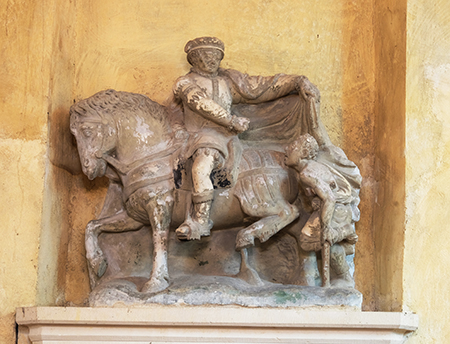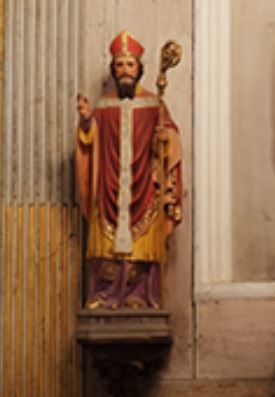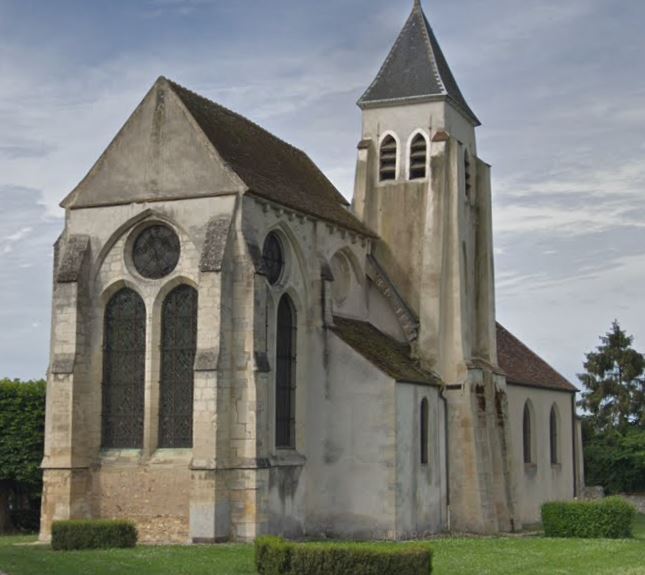L’église Saint-Martin de Bussy-Saint-Martin est construite à partir de la fin du XIe siècle-début du XIIe siècle. Le chœur est construit au XIIIe siècle et le clocher entre le XIVe et le XVIe siècle. Un porche est ajouté au XIXe siècle. L’église (sauf le clocher) est classée aux Monuments historiques le 23 juillet 1921. Le clocher est classé le 29 avril 1987.
À l’intérieur de l’église, nous trouvons une statue de la Charité de saint Martin, en pierre, des XVIe-XVIIe siècles. Saint Martin y est représenté en vêtements civils contemporains, à cheval, avec un petit couvre-chef, et est en train de couper son manteau pour en donner la moitié au mendiant, à demi-nu, qui se trouve derrière la croupe du cheval. Il tient sur une béquille. L’épée est manquante.
Une autre statue, du XIXe siècle, figure saint Martin en évêque, rouge, mitré et barbu, tenant sa crosse dans la main gauche et faisant le geste de bénédiction de la main droite.
Le portail en bois est orné de dix-sept fers à cheval, sans doute laissés par les voyageurs ou les pèlerins, reconnaissants envers saint Martin.
L’église a accueilli le tournage du film Le Magot de Josefa, de Claude Autant-Lara, avec Bourvil, en 1963.
L’église conserve une relique du « gant de saint Martin« .


The Saint-Martin de Bussy-Saint-Martin church was built from the end of the 11th century-beginning of the 12th century. The choir was built in the 13th century and the bell tower between the 14th and 16th centuries. A porch was added in the 19th century. The church (except the bell tower) is classified as a Historic Monument on July 23, 1921. The bell tower is classified on April 29, 1987.
Inside the church is a 16th-17th century stone statue of Saint Martin’s Charity. Saint Martin is shown in contemporary civilian clothes, on horseback with a small headdress, and is cutting off his coat to give half of it to the half-naked beggar behind the horse’s rump. He is standing on a crutch. The sword is missing.
Another statue, from the 19th century, depicts Saint Martin as a bishop, red, mitred and bearded, holding his crozier in his left hand and making the gesture of blessing with his right hand.
The wooden portal is decorated with seventeen horseshoes, probably left by travellers or pilgrims grateful to Saint Martin.
The church retains a relic of the « gant de saint Martin« .
The church was the setting for Claude Autant-Lara’s film Le Magot de Josefa, starring Bourvil, in 1963.

 "/>
"/>